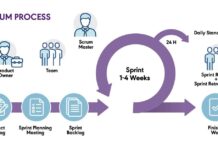You may be the master of a process. You may have the best ideas, but you must express them effectively to persuade others to cooperate.
If you want to scale your ideas or be in management, you must master persuasion and practice with intention in a consistent and committed way.
Change Agents bring people on board, mobilize teams, harness the power of negotiation and persuasion, and move projects forward.
When communicating, we are trying to inform, persuade or emotionally move our audience.
Barking orders is not sustainable. It wears down the barker, and the victim, so you may need to forget practices that worked well for you in hierarchical organizations or among novices. You can no longer lead by fiat.
Persuasion is the art of capturing and leading the imagination and emotions of your audience (reader/listener/viewer) such that they take the actions you wish them to take.
The Golden Key to persuasion is to make others think that what you want them to do is something they would choose to do themselves, and here are eight techniques to help.
Eight Methods of Persuasion
- Subtle or casual persuasion is convincing others that it is their idea by sending hints over a prolonged time. Golden Persuasion Rule: Whatever You Can Get Others To Imagine For Themselves Will Be Most Likely Perceived As Their Thought, Therefore, Will Not Be Resisted! You will also have to give up any credit for the idea, but your ego will survive.
- Textbook persuasion uses step-by-step instructions, provocative questions, or multiple options to show gaps in others’ thinking and let them choose. Giving agency to others will reduce the rejection of the idea.
- 3rd party persuasion comes from a 3rd party expert who people trust. If you cannot persuade, find a trusted authority whose opinion will be accepted.
- Example persuasion is leading by example. Children never follow what you say but what you do, and adults especially experienced skilled workers, will only follow actions. If you want others to work hard, you must work just as hard.
- Help me persuasion is asking an expert for guiding help. Usually, the expert takes over because you need to be faster.
- Seductive persuasion bypasses the rational mind. It is about finding common ground and using humor and a bit of irony, which gives your influence a light touch. This culture will get our audience talking and sharing. When we feel heard, we become pliable and open to new thoughts.
- Positional persuasion is moving the decision far along with enough people that it becomes a foregone conclusion. This is more of a twisting of the arm than being persuasive. It works, but it could backfire.
- Deadline persuasion is reasonable when all else fails, and time is critical, especially if competition strikes or the roof will cave in. It would help if you stressed the urgency that they have something too real to lose if the deal falls through.











